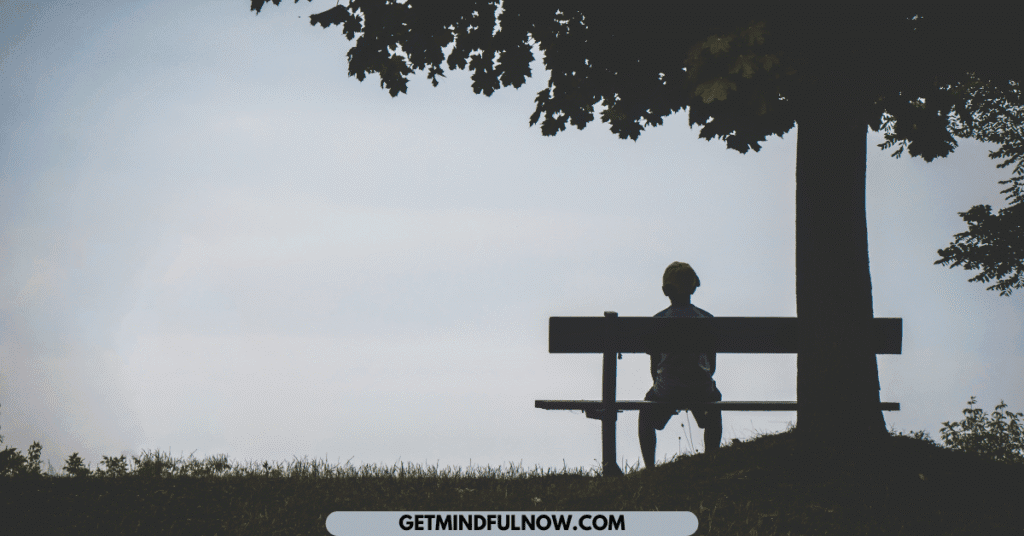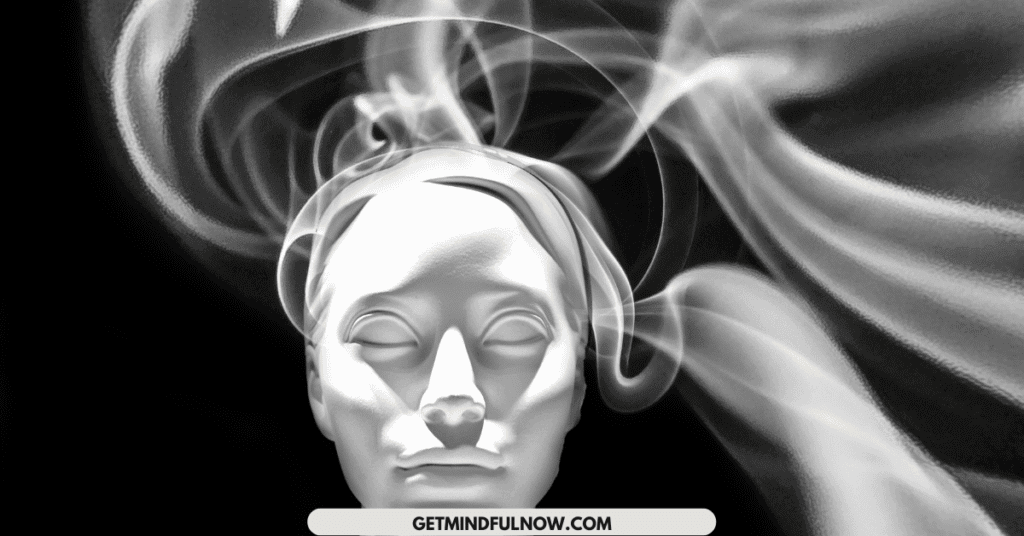I spent years convincing myself I was calm just because I could keep a straight face when life threw punches. But inside, it was chaos. That fake calm where you smile politely while your brain is running ten different disaster scenarios at once? That was my everyday normal. I mistook tension for control, exhaustion for peace. Meanwhile, my heart was sending SOS signals, racing, tightening, twisting like it had downed three espressos. Turns out, my heart and brain weren’t calm at all, they were at war.
If you’ve ever gone to bed mentally exhausted but physically wired, this is for you. Because that’s not anxiety or overthinking, it’s incoherence. Your brain and your heart have fallen out of rhythm, and your entire system is paying the price.
Your organs talk more than you think
We like to believe the brain is in charge of everything, but science says the heart sends more signals to the brain than the brain sends to the heart. That means your thoughts are actually responding to the state of your heart more than you realize.
When you’re stressed, angry, or afraid, your heart rhythm turns erratic, like static on an old radio. The brain receives those signals and matches the chaos, which is why your thinking gets scattered, you lose focus, and suddenly you can’t even remember what you walked into the room for.

But when your heart becomes coherent, smooth, rhythmic, steady, it starts sending clear, ordered signals to the brain. The brain, in turn, synchronizes with that rhythm. It’s called heart-brain coherence, and when it happens, your biology, chemistry, and emotions shift into harmony.
I read about this during my own healing journey in Dr. Joe Dispenza’s Becoming Supernatural, and it changed the way I understood my body completely. He explains that the heart doesn’t just beat; it carries a rhythm that can tune the entire system. When this rhythm settles into around 0.10 Hz, something magical, but measurable, happens. The heart becomes coherent, and the brain’s alpha waves begin to move with it, like two musicians finally finding the same tempo after years of playing out of sync. This is when people start experiencing sharper clarity, healing incurable depression, deep intuition, effortless focus, and that strange yet beautiful feeling of being connected to something much larger than themselves.

The rhythm that holds your sanity
When your heart rhythm turns chaotic, your body reacts as if you’re in danger. It floods you with cortisol and adrenaline, your breathing becomes shallow, and your thoughts spin. This is incoherence, your inner systems competing instead of cooperating. In that mode, the heart and brain are disconnected, so every decision feels like effort. because your body is in survival mode. You can’t heal or think straight in that state, it’s all reaction, no creation. I used to live like that. I’d wake up already tense, checking my phone before my feet even hit the floor, running on autopilot. My mind was sharp, but my energy was dull. I thought I was disciplined. I was just stuck in survival.
But coherence is the opposite. When the heart rhythm steadies and the brain begins to sync with it, you feel grounded, calm, and more focused. It’s a shift from survival to creation, from reacting to leading.
When I first learned about coherence, it sounded like science fiction. But then I started practicing. Instead of trying to stop my thoughts, I shifted my attention to my heart. Slow breaths. Gratitude. Love. It wasn’t perfect, some days I just sat there feeling silly. But within a few weeks, something changed. My reactions slowed. My sleep deepened. I stopped waking up in that pit of tension. And weirdly enough, people around me started saying I felt calmer to be around. That’s not magic. That’s a change in physiology.
The science behind the calm
Research from the HeartMath Institute shows that when people generate emotions like gratitude, compassion, or love, their heart rhythm shifts into a smooth wave instead of random spikes. This pattern influences everything from the immune system to hormone balance and brain performance. One study even found that people in this balanced state performed better on tasks requiring focus and intuition.
The heart communicates with the brain through multiple channels, the nervous system, hormones, and electromagnetic fields. The vagus nerve, that long wandering nerve running from your brainstem to your gut, acts like a messenger. When your heart rhythm becomes coherent, the vagus nerve carries that message upward, telling the brain, “We’re safe now.” The brain then stops flooding your body with stress chemicals and starts releasing feel-good hormones like oxytocin. That’s why a few minutes of gratitude can shift your mood faster than a therapy rant or caffeine hit.
Incoherence: the quiet chaos we normalize
Let’s be honest. We’ve normalized incoherence. We scroll through our phones before sleep, rehash conversations from years ago, or plan imaginary arguments we’ll never have. Then we wonder why our body feels drained. Every chaotic emotion, anger, guilt, jealousy, anxiety, scrambles your heart rhythm. Your brain picks up the static and responds with thoughts that match that chaos. And that’s how we get trapped in cycles of stress and exhaustion.
When I used to live that way, I didn’t realize my body was simply out of rhythm. No amount of positive thinking helped because I was trying to change my thoughts while my heart was still beating in fear. The body leads the brain. Until the heart changes its rhythm, the mind keeps repeating the same emotional story.
The moment they finally sync
The first time I experienced deep coherence, it felt like my body exhaled for the first time in years. My thoughts got quiet, not empty, just organized. I could sense what needed my attention and what didn’t. I remember sitting in that state and thinking, Oh, this is what peace actually feels like. It wasn’t numb or detached. It was alive.
And science backs that up. When the heart and brain synchronize, the body uses energy more efficiently. Hormones stabilize. The immune system activates. Your prefrontal cortex, the part responsible for decision-making and creativity, works better. It’s like rebooting your whole operating system.
How to train your heart and brain to work together
Now that you know how your heart and brain communicate, let’s turn that science into something you can actually feel in your own body. This is where the concept becomes real, where understanding meets practice.
Here’s a simple daily practice you can try:
- Shift your attention to the area around your heart. Put your hand there to help you focus.
- Breathe slower than usual, about five to six breaths a minute.
- Activate a real emotion, gratitude, love, compassion, appreciation. Don’t fake it. Think of a person, memory, or even your pet that makes your chest feel warm.
- Stay with that feeling for two to five minutes.
That’s it. It’s not a long meditation, it’s a short way of regulation. You’re teaching your heart a new rhythm, and in return, it’s teaching your brain how to calm down. Do this a few times a day, especially before stressful meetings, family interactions, or sleep. You’ll notice your body starts craving that coherence like a natural high.

The ripple effect
Coherence doesn’t stop with you. The heart’s electromagnetic field extends several feet beyond your body. Studies show that when one person in a group enters a coherent state, others nearby can begin to entrain with that same rhythm without realizing it. Ever been around someone who just makes you feel calm? That’s coherence in action.
Imagine what would happen if more of us practiced that daily. Fewer emotional explosions. Less anxiety. Better communication. You literally become medicine for the people around you.
My two cents from living this work
I’ve been studying and practicing this for years now, neuroscience, psychoneuroimmunology, basically the work of Dr. Joe Dispenza. I’ve seen people including myself, shift their whole physiology just by learning to regulate their hearts. I’ve seen people stop panic attacks, improve autoimmune symptoms, even heal chronic fatigue through sustained coherence. The science is catching up to what ancient wisdom has said all along: the heart is not just a pump; it’s a brain with its own intelligence.
If you’ve been trying to think your way out of stress, maybe it’s time to feel your way out instead. Your body is wired for balance; it just needs the right rhythm to remember how.
Final thoughts
When I look back at where this understanding began for me, reading Dr. Joe’s work during my own healing, it’s still hard to believe how much has changed. What started as a search for peace turned into a lesson in how my body communicates and heals when I listen to it. That’s why these insights feel sacred to me. They remind me that the bridge between science and healing is built one heartbeat at a time, and that coherence isn’t just a theory, it’s a lived, breathing experience that reshaped my life from the inside out.
If you want to go deeper into this work, to learn how to train your body to heal, regulate, and transform the way mine did, you can book a one-on-one session with me through my homepage. And if you love learning about the science of healing and self-transformation, subscribe to my newsletter and follow me on Threads, where I share daily insights, real stories, and tools for self-directed healing.








